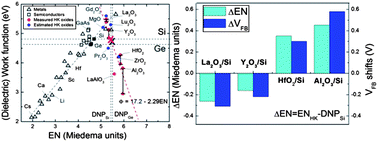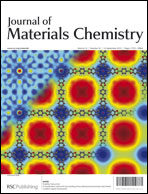An interface dipole predictive model for high-k dielectric/semiconductor heterostructures using the concept of the dipole neutrality point
Abstract
This study introduces a predictive model involving the concept of the dipole neutrality point (DNP) for dipoles at the high-k dielectric/semiconductor interface. The DNP allows a simple and intuitive prediction of interface dipoles using electronegativity (EN). This concept is formulated based on a negative correlation between the dielectric work function and EN observed for many high-k


 Please wait while we load your content...
Please wait while we load your content...